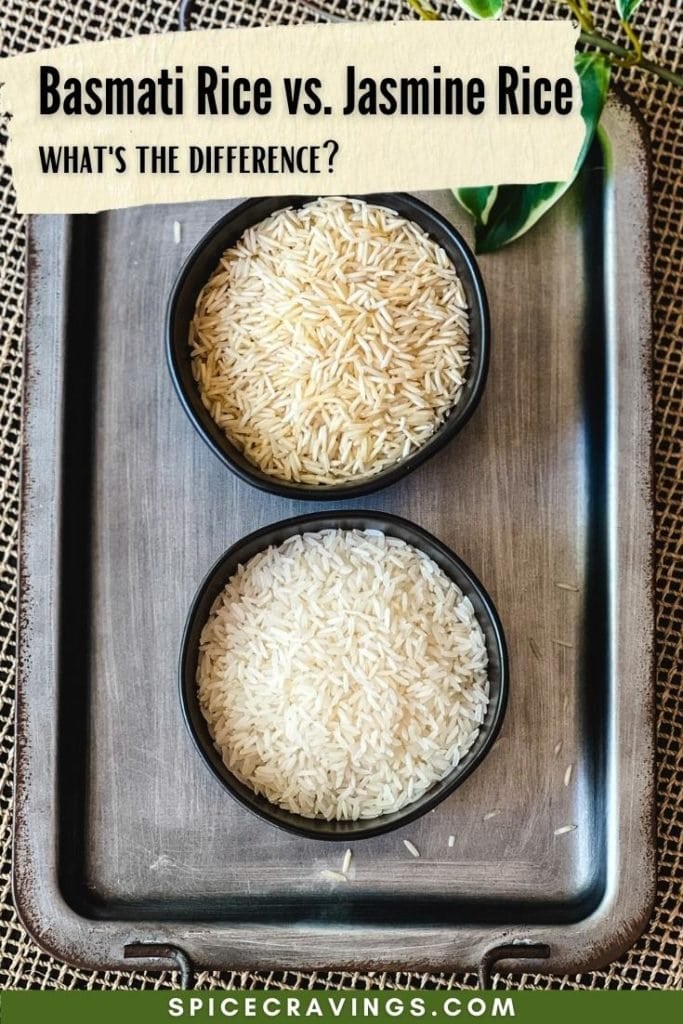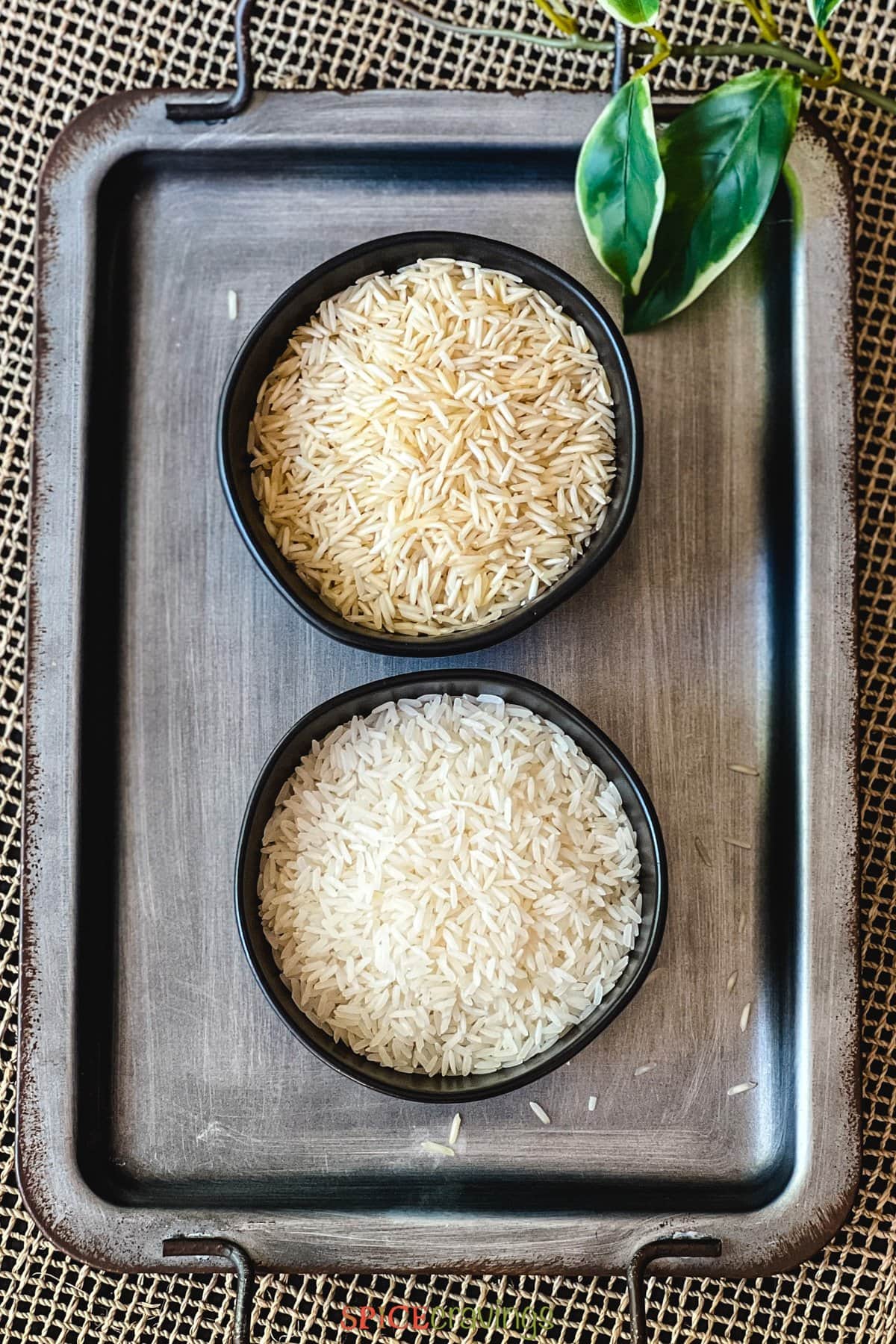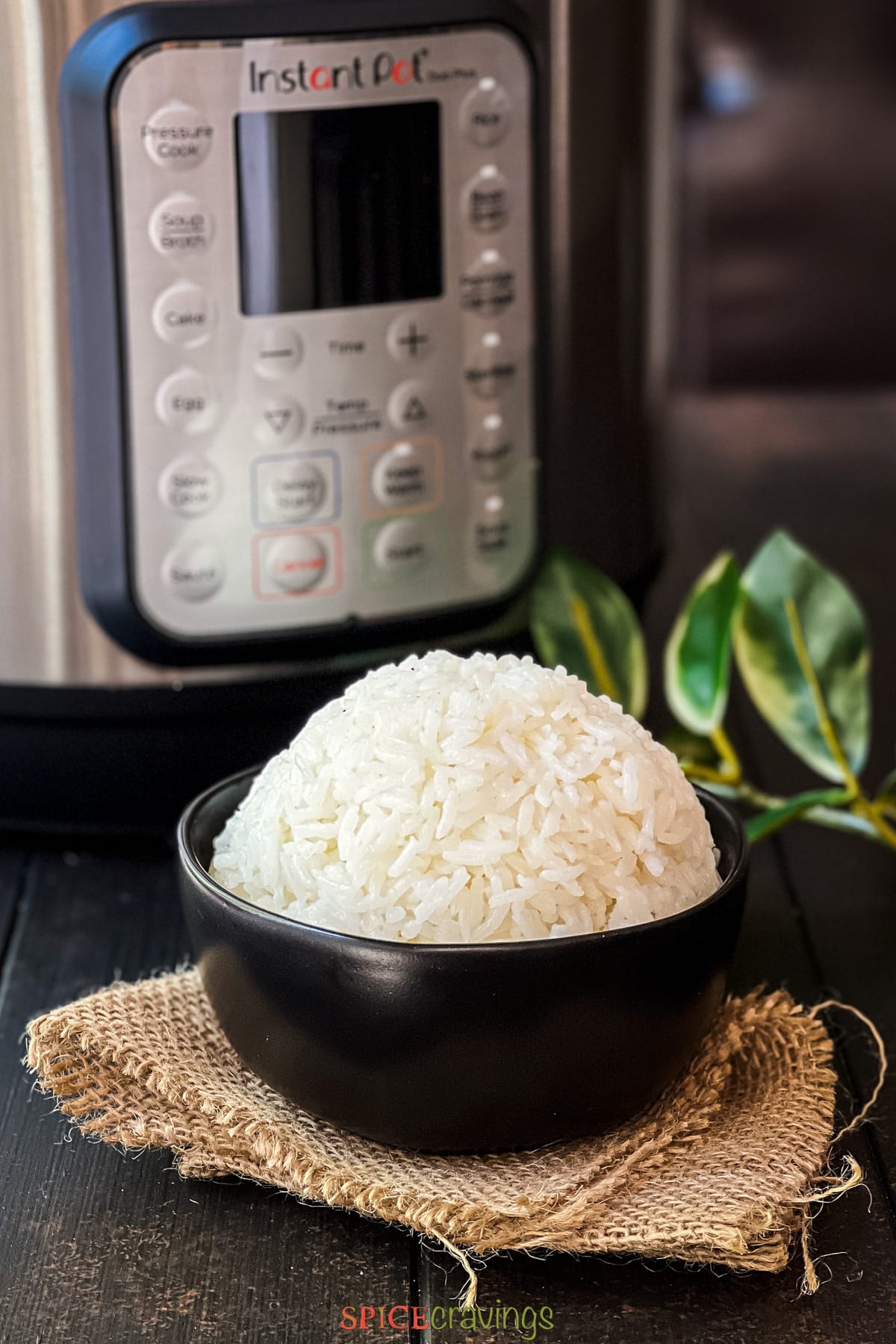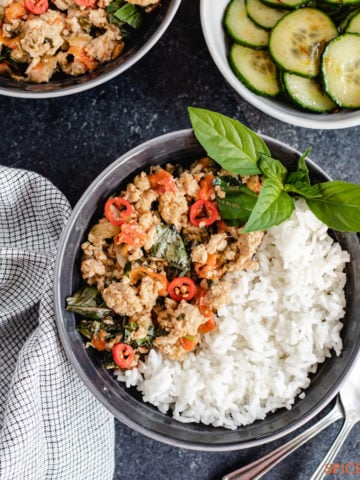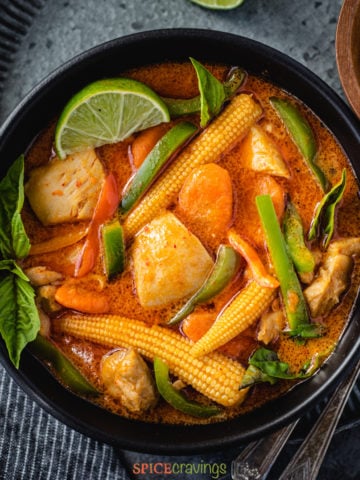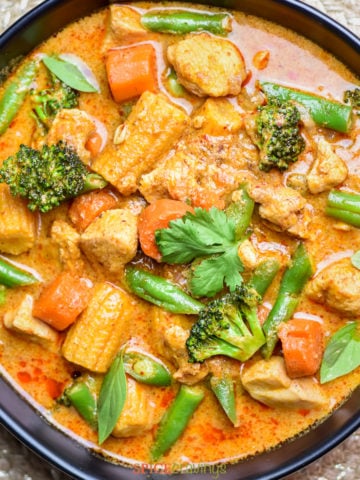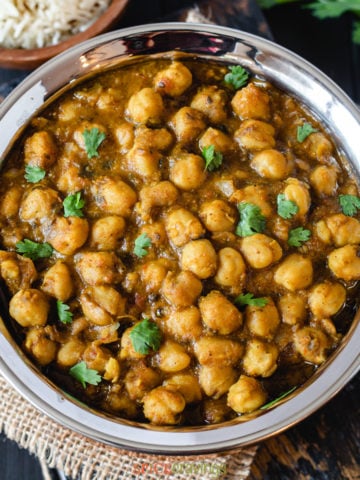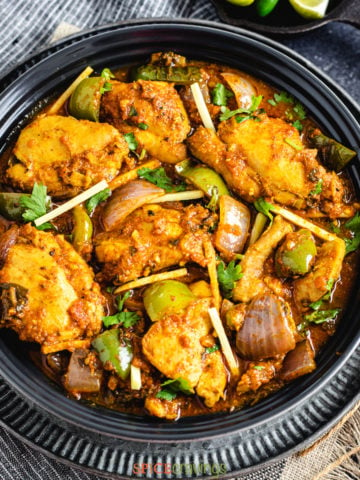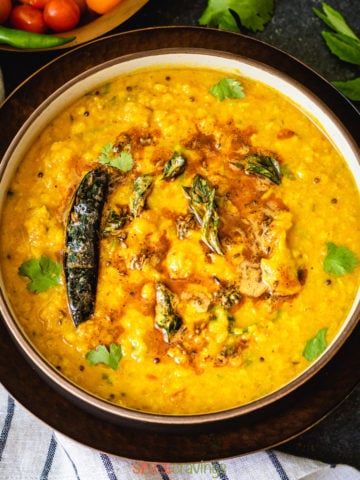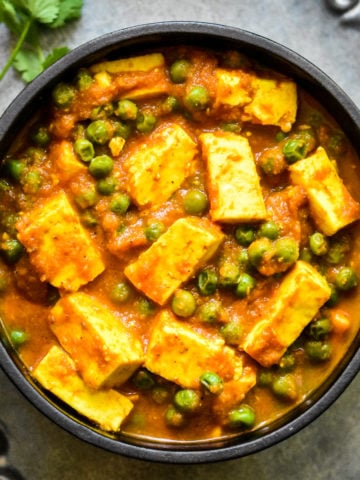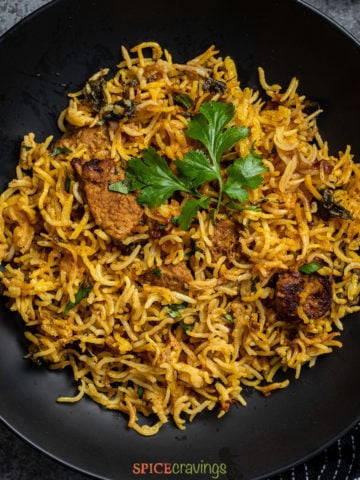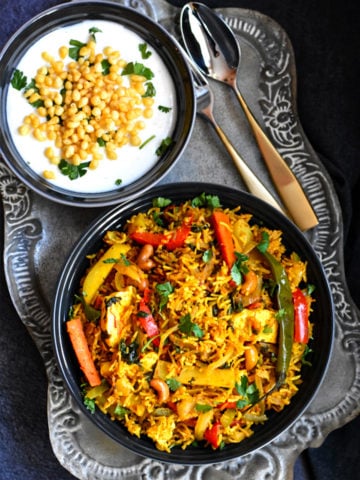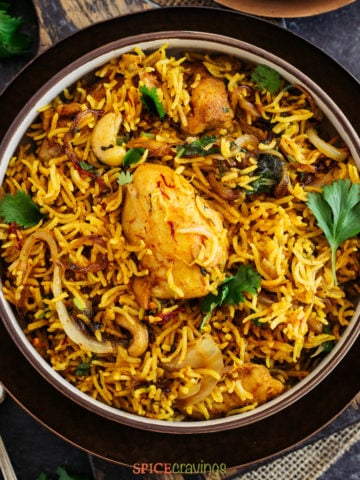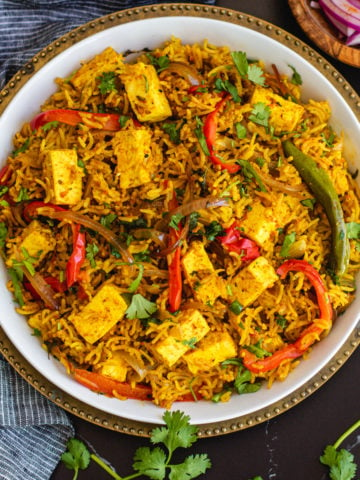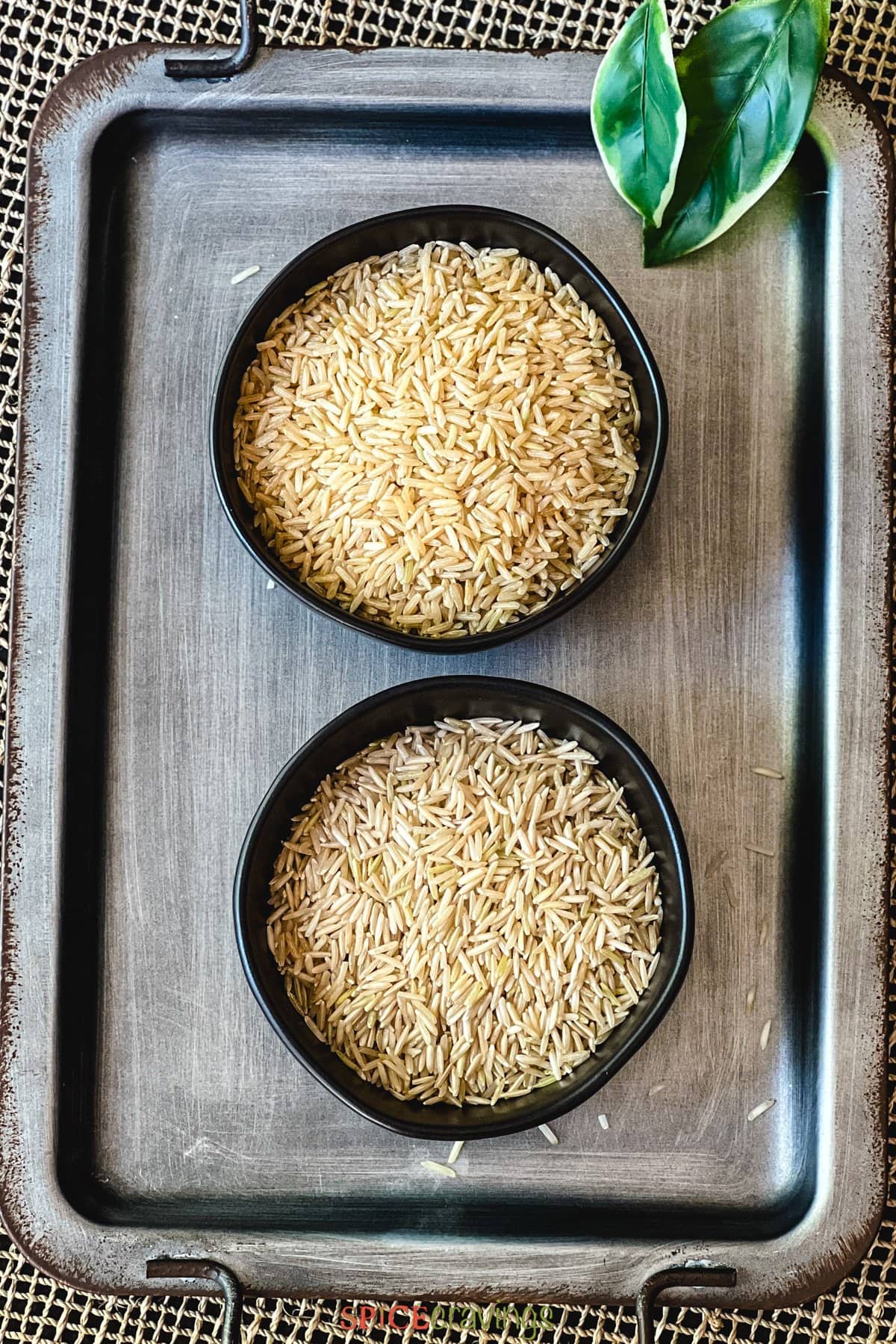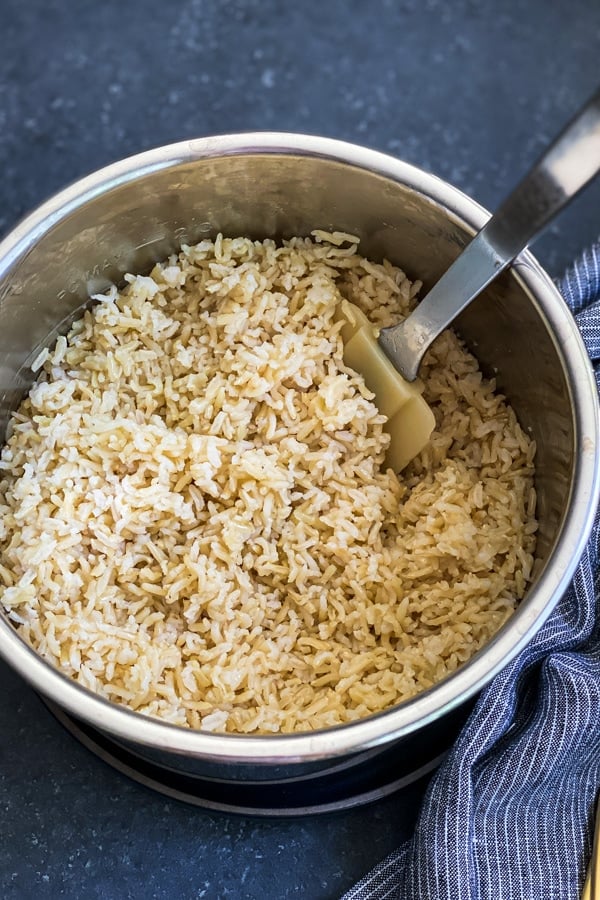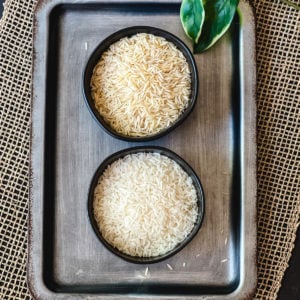Rice is a weekly - almost daily - occurrence in my house. It is the star of popular rice pilafs like biryani and more, while also offering a delicious and comforting side dish to curries, dal, and beans.
While I like to think of it as a blank canvas, rice is a masterful cooking technique all on its own. The texture of cooked rice varies from soft, light and fluffy to chewy, starchy and sticky. Let’s discover the unique characteristics of basmati and jasmine rice - and what makes these two long-grain rice varieties so similar yet so different. You may also like: 15+ Instant Pot Rice Recipes from Around the World
What is Basmati Rice?
Basmati rice (pronounced bas-MAH-tee) is a long-grain aromatic rice variety native to India, the Himalayas, and Pakistan. It is nutty and slightly floral, with tapered edges and a firm bite and dry texture. Higher quality basmati rice is aged, sometimes for as long as a few years, which ensures the grains cook up fluffy and separate. Here’s a detailed Basmati Rice Recipe.
What is Jasmine Rice?
Jasmine rice is a long-grain aromatic rice variety grown in Southeast Asian countries, including Thailand, Cambodia, Laos, and Vietnam. It is floral and a bit more aromatic, with a sticky, plump, and soft texture. Jasmine rice gets its name from its color, as it resembles the color of a jasmine flower. Here’s a detailed Jasmine Rice Recipe.
Basmati rice vs jasmine rice: Similarities and Differences
There are many similarities and differences between basmati and jasmine rice. The most noteworthy include the following: Origin: Basmati rice is native to India and Pakistan. Jasmine rice is grown in Thailand, Cambodia, Laos, and Vietnam. Appearance: Although the two rice varieties look very similar when dry, once cooked, basmati rice is long with a slight curl to each grain versus jasmine rice, which is short and wide with rounded edges. Aroma: Basmati rice is nutty and floral, whereas Jasmine rice is much more floral with notes of buttered popcorn. Texture: Basmati rice has firm, fluffy, clean grains, versus jasmine rice which is stickier, starchier, and softer.
Basmati vs. Jasmine Rice: Where to Buy
When shopping, both Basmati and Jasmine rice can be found in the bulk bins, dry grains section, or global/international section of most grocery stores, or online. They are sold in bags varying in size, anywhere from 1 to 20 pounds. Or, if found in the bulk bins, priced per ounce. Note: For higher quality, go for cloth bags versus those sold in plastic. And for basmati, look for the label “extra-long grain.”
Jasmine vs. Basmati Rice: How to Use Them
Basmati and jasmine rice can be used interchangeably, but their slightly different aromas and textures make them well suited for specific cuisines. Let’s dive deeper into it.
How to Use Jasmine Rice
Jasmine rice is oftentimes served with Thai and Southeastern cuisine and is prominent in many soups and stir-fries. Some of my favorite recipes to pair it with include:
How to Use Basmati Rice
Basmati rice is often served with dal (lentils), beans (legumes), and Indian curries since the drier grains soak up the flavorful sauces. Some of my favorite recipes to pair it with include: Basmati rice is the most popular choice for a variety of rice pilafs and biryani recipes, such as:
How to Cook Basmati Rice
Here’s an easy stovetop recipe for cooking basmati rice. If you like to use your pressure cooker, check out this detailed recipe for Instant Pot basmati rice.
Rinse 1 cup of rice 2-3 times until the water runs clear, then soak it for 15 minutes.Boil 2 cups of water in a saucepan, and add ¼ teaspoon salt and 1 teaspoon olive oil (or ghee).Add rice and stir. Bring the water to a boil, reduce the heat to medium, cover the pot and cook for 10 minutes.Turn off the heat and let the rice rest for 10 minutes. After that, fluff up the rice with a fork and enjoy!
How to Cook Jasmine Rice
Follow this easy recipe for cooking jasmine rice on the stove. If you like to use your pressure cooker, check out this detailed recipe for Instant Pot jasmine rice.
Rinse 1 cup of rice 2-3 times until the water runs clear (no need to soak the rice).Boil 2 cups of water, and add ¼ teaspoon salt and 1 teaspoon olive oil.Add the drained rice, stir, and bring the water to a boil. Reduce the heat to medium, cover the pot and cook for 10 minutes.Turn off the heat and let the rice rest for 10 minutes. After that, fluff up the rice with a fork and enjoy!
How to Cook Brown Jasmine or Basmati Rice
Brown rice, whether jasmine or basmati, is slightly nuttier with a chewier texture. Since it is minimally processed, it also takes much longer to cook than white rice. This is why I like to cook brown rice in my Instant Pot. Refer to the detailed recipe post for Instant Pot Brown Rice, or simply:
Rinse rice 2-3 times and strain. Add rice, water, salt, and oil to Instant Pot. Stir. Close the lid. Set the valve to the ‘Sealing’ position. Press Manual/Pressure Cook on high for 22 minutes for Jasmine, and 23 minutes for Basmati rice.After the cooking time is up, wait for natural pressure release for 10 minutes, after which release the remaining pressure. Fluff the rice gently using a fork.
How to Store
Basmati: Store in a cool, dry place in its original packaging and use within a few months. For longer storage, place the packaged rice in an airtight container for up to one year. Jasmine: Store in a cool, dry place in a plastic bag (or original packaging) set inside an airtight container. The rice should keep indefinitely. But the sooner you use it, the more aromatic it will be.
Tips for Perfectly Cooked Rice
Rinsing: Rinsing the rice a few times under cool running water rids of excess starch, which makes for fluffier rice.Soaking: It is only necessary to soak basmati rice for more even cooking. There is no need to soak jasmine rice as it will become mushy.Adding salt: Start with ¼ teaspoon salt. If you find the rice still needs more seasoning, adjust the salt quantity to your liking the next few times you cook rice.Adding oil: Oil is optional, but recommended as it adds a glossy sheen and better mouthfeel.Rest before fluffing: Remove the rice from heat and rest for 10 minutes, without opening the lid. This final rest steams the rice for a perfect al dente texture.
📖 Recipe
